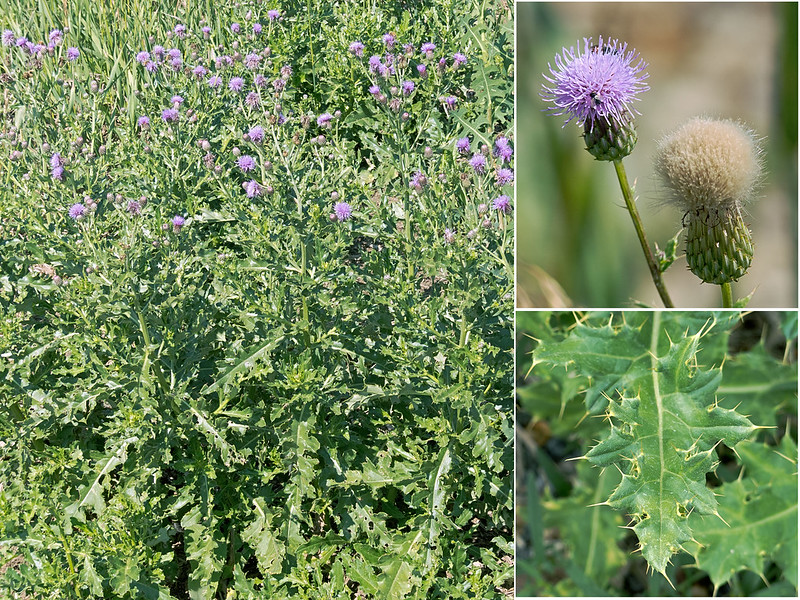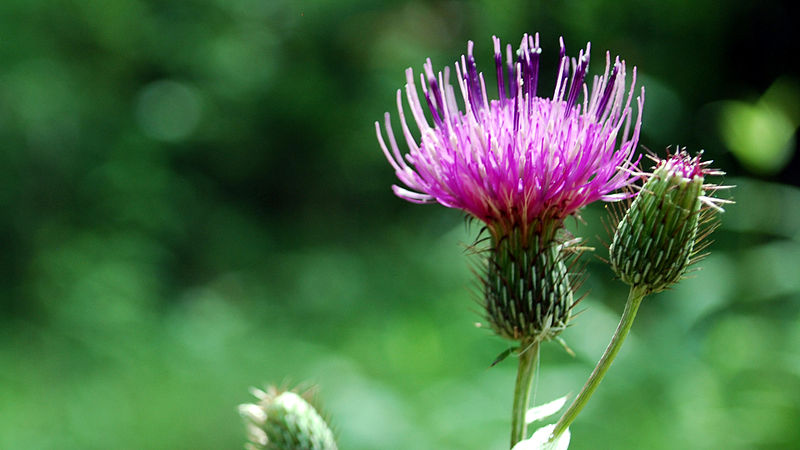Native Plants: Ragweed & Thistle
- jpgiovannettone
- Jun 3
- 3 min read
Two often misunderstood members of the Asteraceae family that can be found throughout much of the United States are ragweed and thistle. The reason these plants are considered misunderstood is that even though they are native and extremely helpful towards their surrounding environment, human encounters do not usually end well with the results ranging from severe allergic reactions to sore hands and fingers. Hopefully the information below will shed a more positive light on these two plants.
Ragweed is a hardy plant that can survive under almost any conditions throughout the summer season. It prefers full sun and slightly dry conditions; therefore, it is one of the native plants least affected by drought. Ragweed will thrive in almost any type of soil as well, including clay, gravel, or sand, and will even thrive in rather sterile soil due to the fact that there will be less competition from other plants (other than thistle). In the Great Plains you will see it growing anywhere a plant can grow, from construction sites and along railroads to croplands and open meadows. Because the foliage of ragweed is bitter, it is not a popular food source for many mammals. In addition, its pollen is very fine and can be easily carried by the wind; this along with the fact that its seeds can remain viable for up to five years makes it a very persistent plant. Having fine pollen also causes ragweed to be a major contributor of severe allergies and hay fever during the late summer and early fall months during full bloom. Ragweed is also considered allelopathic, which means that it will release biochemicals that inhibit the growth of other nearby plants. So in addition to its persistence, ragweed can be thought of as one of the most aggressive bullies in the native plant world.

Based on the characteristics escribed above, you might be wondering what is the upside to having ragweed around. Though it is rather weak in terms of attracting pollinators other than honeybees, the fact that its seeds can last a long time and that the spikes of its seeds often remain above snow cover makes it a favorite wintertime food source for various types of gamebirds, songbirds, and squirrels. So if you want to maintain a healthy population of sparrows and other birds during the long winter months, consider adding ragweed to your native plant garden. On a medicinal level, it is also claimed that the leaves of ragweed can be used as an antihistamine but only before the formation of any flowers on the plant. It seems ironic that a plant that can cause such serious allergies would provide the means by which to alleviate these allergies ahead of time.
Thistle is another plant within the Asteraceae family with which most people have not had pleasant encounters, which primarily involve being poked by the sharp barbs that blanket the stem and leaves of the plant. The barbs are in effect what make thistle such a hardy plant as they make it nearly impossible for wildlife to eat it, which makes thistle almost as persistent and aggressive as ragweed. Since both plants thrive under similar environmental conditions and can grow to similar maximum heights, they can often be seen growing together.

There are many varieties of thistle; the one described and shown above is referred to as Canada Thistle, which is actually an invasive species. It can be distinguished from its native relatives by not only the numerous and sharp barbs located over the entire plant, but also by the fact that it has much smaller flowers than native thistles (the flowers of the native Field Thistle are shown below) and that its leaves are entirely green, while the leaves of many natives are white underneath. Many native species are also taller than Canada Thistle, some of which reach maximum heights between 6 and 10 feet. Native thistle is a great addition to any native garden as they serve as an abundant source of nectar for many types of pollinators, including bees and butterflies. Field thistle, in particular, is also popular with various types of finches and serves as a larval host for the painted lady butterfly.

Helpful Hints
Though ragweed and thistle are often referred to as noxious plants due to the challenges described above, I hope that the environmental benefits they provide elicit a new respect for the native versions of both plants.




Comments